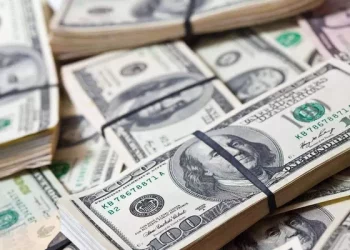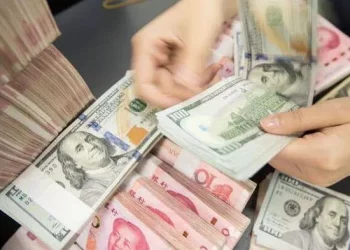The currency of a nation is often a direct reflection of its economic health and the way people interact with money on a daily basis. In Mexico, the Peso (MXN) has undergone several transformations over the years, with various coins and bills circulating throughout the country. Among these, the 100 peso coin, which was introduced in 1996, has sparked considerable debate. While this coin once enjoyed widespread use, its continued presence in everyday transactions today raises important questions. Are 100 peso coins still actively used in Mexico? What is their role in the modern economy? And what factors influence their current usage?
In this article, we will explore the history of the 100 peso coin, its current usage, and the cultural and economic factors that affect its presence in the marketplace. We will also consider the broader trends in the evolution of currency in Mexico and other countries and how these trends influence the use of coins in everyday transactions.
History of the 100 Peso Coin in Mexico
The 100 peso coin was introduced in 1996 as part of Mexico’s broader effort to modernize its currency system. At the time, the country was transitioning from the old peso (MXP) to the new peso (MXN) at a rate of 1,000 old pesos to 1 new peso. This currency change was necessary to stabilize the economy, which had been struggling with hyperinflation in the preceding decades. The introduction of the 100 peso coin was a response to the need for a coin of higher value that could replace higher-denomination bills, such as the 500 peso note.
Made of bi-metallic material, the coin quickly became a symbol of economic change. It featured various designs over time, often celebrating Mexico’s rich cultural heritage. Despite its initial popularity, however, the 100 peso coin has faced several challenges in remaining a staple of everyday transactions.
Evolution of Mexico’s Currency and the Decline of the 100 Peso Coin
Since the 1990s, Mexico’s currency has evolved considerably. Inflation rates have fluctuated, and economic conditions have changed, leading to shifts in the way people use currency. The 100 peso coin, while useful for certain transactions, has slowly begun to fall out of favor due to a variety of reasons. Among these are the rise of electronic payment methods, inflation, and changing consumer habits.
The inflationary pressure on the peso has led to a gradual decrease in the purchasing power of the 100 peso coin. What was once a relatively valuable coin is now worth much less, as prices for goods and services have steadily increased over the years. In the early 2000s, a 100 peso coin could buy a substantial amount of goods, but today, its purchasing power is significantly weaker.
At the same time, Mexico has seen an increase in the use of electronic payments, particularly credit and debit cards, as well as mobile payment systems like smartphones. These digital payment methods offer greater convenience and security for consumers and businesses alike, making physical coins like the 100 peso coin less desirable. Many businesses now prefer to handle transactions through digital means, which has further reduced the need for physical coins in the economy.
Current Usage of the 100 Peso Coin
Despite the challenges mentioned above, the 100 peso coin is still technically in circulation in Mexico. It is legal tender and can be used in everyday transactions, particularly for purchases of small to mid-range items. However, its actual usage has decreased significantly over time.
One of the most common places where the 100 peso coin is still used is in the informal economy. Street vendors, small shops, and local markets are more likely to accept the coin, as they often operate on a cash-only basis and deal in smaller denominations. In these environments, the 100 peso coin still serves a purpose, particularly when dealing with purchases in the range of 50 to 200 pesos.
However, in larger businesses, retail chains, and more modern commercial establishments, the 100 peso coin is not as frequently used. These businesses often rely on paper bills and digital payments for transactions of higher value. The 100 peso coin has become somewhat of an inconvenience for these businesses, as it is heavier and bulkier compared to other forms of payment, and many customers simply prefer the convenience of using cards or mobile wallets.
In terms of how frequently people encounter the 100 peso coin, it has become less visible in the hands of consumers. Many individuals prefer to hold onto bills rather than carry coins, especially those of higher denominations. The 100 peso coin’s large size and metallic composition also make it less desirable to carry around, particularly in comparison to smaller, more practical coins or bills.
Factors Affecting the Use of the 100 Peso Coin
Several key factors have contributed to the decline in the use of the 100 peso coin in Mexico. These factors can be broadly categorized into economic, technological, and cultural influences.
1. Inflation and Devaluation
One of the most significant factors in the decline of the 100 peso coin is the devaluation of the peso over time. Inflation, combined with the rising cost of goods and services, has eroded the purchasing power of the 100 peso coin. In the 1990s, this coin was considered a high-value item in the economy, but today, it often falls short of covering the cost of a meal at a mid-range restaurant or a day’s worth of groceries. As inflation has risen, the 100 peso coin has become less valuable in real terms, and people have turned to higher-denomination bills or digital forms of payment to handle larger purchases.
2. Rise of Digital Payments
The advent of digital payments has dramatically changed the way consumers and businesses handle money. Credit cards, debit cards, and mobile payment systems have all seen a surge in popularity over the past two decades. These payment methods offer greater convenience, security, and speed compared to physical currency. As a result, the demand for coins, including the 100 peso coin, has decreased.
In a country like Mexico, where the use of mobile wallets like MercadoPago and other digital platforms is growing rapidly, consumers are increasingly relying on their smartphones for transactions, further diminishing the need for coins. Additionally, these digital payment systems often offer incentives such as cashback, rewards points, and discounts, which attract consumers away from cash payments altogether.
3. Changing Consumer Habits
Consumer habits have also played a role in the reduced use of the 100 peso coin. As the global economy becomes more digitized, cash is used less frequently in many parts of the world. In Mexico, younger generations, who are more tech-savvy and comfortable with digital payments, are less likely to carry cash or use coins in daily transactions. These younger consumers prefer the convenience and speed of electronic payments, which has led to a further decline in the demand for physical coins like the 100 peso coin.
Additionally, the rise of online shopping has contributed to the reduced importance of coins in everyday transactions. E-commerce platforms like Amazon Mexico and MercadoLibre offer a wide variety of products that can be purchased with digital payment methods, bypassing the need for cash altogether.
What Does the Future Hold for the 100 Peso Coin?
While the 100 peso coin is still in circulation, its future remains uncertain. Several possible scenarios could play out in the coming years:
1. Discontinuation of the Coin
As digital payment methods continue to dominate, and inflation further erodes the value of the 100 peso coin, it is possible that the Mexican government may decide to discontinue the coin altogether. This has already happened in several countries, where high-denomination coins were phased out due to low demand. In such a case, the 100 peso coin could be replaced by a higher-denomination bill or simply eliminated from circulation, with electronic payments taking its place.
2. Continued Use in Niche Markets
Alternatively, the 100 peso coin may continue to serve a niche role in Mexico’s informal economy. Street vendors, small businesses, and rural areas where cash transactions remain more common may continue to use the coin. However, it is likely that this use will diminish further as digital payment systems expand into more remote regions and become more accessible to a broader population.
3. Limited Circulation and Collectibility
Finally, the 100 peso coin could become more of a collector’s item than a form of regular currency. With fewer coins in circulation, the 100 peso coin could become a rare artifact that is valued by numismatists and collectors. Its significance as a historical object may outweigh its functional use in everyday transactions.
Conclusion
The 100 peso coin, once a key feature of Mexico’s currency system, has seen a marked decline in its usage in recent years. While still technically in circulation, it is no longer a commonly used item in everyday transactions, particularly in the context of rising digital payments, inflation, and changing consumer habits. Its role has shifted from a widely used currency to a less common form of payment in certain markets.
As Mexico continues to embrace technological advancements in payment systems, the future of the 100 peso coin remains uncertain. However, it is clear that its role in the economy will continue to evolve, with digital payments and inflation driving the shift away from physical currency in favor of more modern, convenient alternatives. Whether the 100 peso coin will continue to be used in niche markets, or eventually phased out entirely, remains to be seen. For now, it remains a relic of a bygone era of currency usage in Mexico.
Related Topics:




























